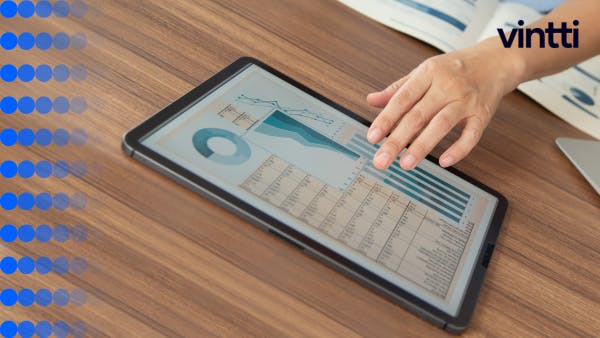Linking your bank account to Bill.com can seem daunting at first.
But with some simple steps, you can securely connect your accounts and unlock convenient payment automation features.
This guide will walk you through everything you need to know to link your bank account, from meeting prerequisites to troubleshooting any issues.
Introduction
Bill.com is a cloud-based software platform that helps businesses manage their accounts payable and accounts receivable workflows. By connecting your bank account to Bill.com, you can simplify and automate key financial transactions.
What is Bill.com?
Bill.com is an all-in-one solution for accounts payable, accounts receivable, and payment processing. Key features include:
- Online invoicing to easily create, send, and track invoices
- Automated approval workflows to streamline invoice processing
- Integration with accounting software like QuickBooks and NetSuite
- Secure online payment processing with support for ACH, cards, domestic and international wires
- Real-time cash flow visibility and reporting
By centralizing financial workflows on Bill.com and connecting your bank account, you can save significant time by reducing manual work and errors.
Benefits of Connecting Your Bank Account
Connecting your bank account to Bill.com unlocks key benefits:
- Seamless payments: Send and receive payments directly from your bank account without manual work. Bill.com handles moving money between your customers and vendors.
- Cash flow management: With real-time insight into your cash flow and upcoming payments, you can better manage funds and forecast.
- Error reduction: Automated workflows and payments reduce human errors like duplicate invoices and overdue payments.
- Full visibility: With all financial information in one place, you gain more control over your end-to-end cash flow.
Overall, connecting your bank account to Bill.com simplifies key financial workflows, reduces busywork, provides real-time visibility into your cash flow, and helps manage funds seamlessly via automated payments.
How do I link my bank account to Bill com?
To link your bank account to Bill.com through the Android mobile app, follow these steps:
- From the Home screen in your BILL app, tap on the Options bars.
- Select Settings.
- Select Bank Accounts.
- Tap the plus sign + to add a new bank account.
- Select "Verify in 1-2 business days" as the verification method.
- Enter the details for the bank account - all fields are required. This includes:
- Account type (checking or savings)
- Routing number
- Account number
- Once all required fields are filled in, tap "Finish" to complete adding the account.
The bank account will now be linked to your Bill.com account. It may take 1-2 business days to verify the connection. Once verified, you can use this bank account to pay bills, invoice clients, and more through Bill.com.
Let me know if you have any other questions!
How do I give access to my bank account on Bill com?
To give another user access to your bank account on Bill.com, follow these steps:
- Log into your Bill.com account and select "Settings" from the top menu.
- Under "Bank & Payment Accounts", choose "Bank Accounts".
- Find the bank account you want to share access to and select its account number.
- In the "Authorized Users" section, click "Show".
- Select "Add User".
- Choose the user you want to share access with from the dropdown menu or search for their name. Then click "Add User".
The user you selected will now have access to view and manage transactions from that bank account in Bill.com. You can repeat these steps to remove access or add other users as needed. Restricting account access helps maintain security and control over financial data.
Does Bill Com automatically transfer to bank account?
Yes, Bill.com does offer an automatic transfer feature to eligible bank accounts called Instant Transfer. Here's how it works:
- Enable Instant Transfer: You can turn on Instant Transfer under Settings > Bank Accounts. Toggle "Enable Instant Transfer" on for the bank account you want to automatically deposit payments into.
- Eligible Payments: Instant Transfer will automatically deposit eligible electronic payments from customers into your connected bank account, usually within 1 business day. This includes ACH and wire transfers.
- Ineligible Payments: Some payment types are not eligible for Instant Transfer, like paper checks, which still need to be manually deposited. Refer to Bill.com's help article for details.
- Set as Default: Under Bank Account settings, you can select a bank account enabled for Instant Transfer as the default account to automatically receive deposited funds.
So in summary, yes Bill.com lets you automatically transfer eligible electronic payments directly into your connected bank account through Instant Transfer. This saves you time from having to manually deposit checks and speeds up access to your money.
sbb-itb-9f3178c
sbb-itb-9f3178c
What is a clearing account in Bill com?
A clearing account in Bill.com acts as a temporary holding place for money being transferred between a business's bank account and their Bill.com account. Here's a quick overview:
- When you connect your bank account to Bill.com, you designate one of your accounts as the "clearing account." This is usually a low or no interest account used specifically for payments.
- When you pay a bill through Bill.com, the money is first transferred from your bank account into the clearing account. This allows Bill.com to verify the funds are available.
- Once the payment is processed, Bill.com then transfers the money from the clearing account to your vendor or supplier to pay the bill.
- At the end of each day, Bill.com reconciles the clearing account and transfers any remaining balances back to your main bank account.
So in summary, the clearing account serves as a middleman between your bank account and Bill.com payments. It streamlines the payment process by allowing Bill.com to temporarily hold funds before disbursing them. This eliminates the need to manually reconcile individual transactions.
Prerequisites for Connecting Your Bank Account
To connect your bank account to Bill.com, there are a few prerequisites you need to fulfill first:
Have a Bill.com Account
Before connecting your bank account, you need to have an existing Bill.com account. If you haven't signed up yet, you can create a free trial account on the Bill.com website. Make sure to choose the appropriate plan for your business needs.
Supported Banks
Bill.com connects with most major U.S. banks and credit unions. Before trying to connect your account, verify that your financial institution is supported. You can find a full list of supported banks on Bill.com's help site. If your bank isn't listed, you may want to consider switching to a supported bank.
Account Access and Privileges
To connect your bank account to Bill.com, you need to have proper access privileges. As the account owner, you should be able to securely provide your account login credentials to Bill.com for them to link accounts. If you do not have the appropriate rights, you'll need to contact your bank to add or update your access permissions first.
By ensuring you meet these three prerequisites first, you'll be ready to easily connect your bank account to Bill.com and start streamlining your transactions. Let me know if you have any other questions!
Step-by-Step Guide to Connecting Your Bank Account
Connecting your bank account to Bill.com allows for seamless payments and transactions between the two platforms. Here is a walkthrough of the step-by-step process:
Log Into Your Bill.com Account
Go to bill.com and log into your account using your email and password. This ensures you are accessing the correct Bill.com account to connect your bank details to.
Navigate to 'Banking' Settings
Once logged in, click on Banking found under Settings on the left sidebar. This is where you manage connected bank accounts within Bill.com.
Enter Your Bank Account Credentials
Follow the instructions to securely enter your bank name, routing number, and account number. This links your bank account to Bill.com.
Review and Confirm Account Access
Carefully review that you have proper account access privileges. Bill.com will verify access through micro-deposits to confirm read/write abilities.
Activate Connected Bank Account
The final step is to activate your connected bank account once Bill.com has verified access. This fully enables transfers between your bank and Bill.com.
Connecting your bank account to Bill.com through these simple steps allows for streamlined payments, tracking, and financial management between the platforms. Let us know if you have any other questions!
Managing Your Connected Bank Account
Keeping your connected bank account organized and up-to-date in Bill.com ensures smooth transactions and reconciliation. Here are some tips:
Monitor Automatic Syncs and Updates
- Bill.com will automatically sync new transactions from your connected bank account on a regular basis, usually daily.
- Review your Transactions page periodically to check for new imports. This helps you stay on top of what's coming in and out of your accounts.
- If needed, you can manually sync your bank account by going to Banking Settings and clicking "Sync Now".
Checking Connectivity Status
- Under Banking Settings, check the status icon next to your bank connection.
- Green means it's connected properly. Yellow is linking, and red means it's disconnected.
- If you see a warning or error, try syncing your account manually first by clicking "Sync Now".
Updating Credentials or Account Details
-
If your bank account details change, go to Banking Settings and click "Edit" to update:
-
Account number
-
Routing number
-
Login credentials
-
Keeping these details current avoids sync interruptions due to expired credentials.
Troubleshooting Connection Problems
Basic troubleshooting if sync issues occur:
- Confirm your credentials are correct under Banking Settings. Update if needed.
- Check for alerts or error messages under Banking Settings that explain the issue.
- Try manually syncing your account by clicking "Sync Now".
- If issues persist, contact Bill.com support for help diagnosing and correcting sync problems.
Following these tips will help you get the most out of your connected bank account integration. Let Bill.com do the heavy lifting in keeping your transaction data up-to-date.
Conclusion
Key Takeaways
- Connecting your bank account to Bill.com provides visibility into cash flow through automated transaction syncs, helping optimize financial management.
- Following best practices when setting up the connection, like confirming account access and matching transactions, ensures a smooth integration.
- Maintaining the link with regular reviews and updates to any account changes will allow for continued seamless usage over time.
- The time invested in integrating Bill.com with banking systems leads to greater efficiency through centralized visibility and control.




